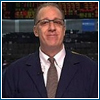8 Rules That Simplify Futures Trading

I never knew where my first job on the trading floor was going to lead me. It started as a runner in the grain room at the Chicago Board of Trade (CBOT) making $70 bucks a week. It then took me into the bonds where I got to know Tom Bladwin who turned $15,000 into $150,000,000. I met many of the other big traders back then. I ended up at the CME; that was my real calling – The S&P 500 futures.
I liked the bonds but they were too slow. On a good day the bonds would move a full point but on the slow day they would move less than 15 or 20 ticks. It was a whole different deal at the MERC (CME) and when I finally settled in and got a better handle on the price action of the S&Ps I knew I was there to stay. All the ups, downs and volatility were right up my alley. Economic reports would move the S&P in the morning and earnings would move them in the afternoon. It was non-stop action. I knew right away there was a big opportunity and within a few years of opening my desk it quickly became the largest S&P futures desk on the floor. We executed orders for some of the biggest names in the business, Moore Capital, Soros, Paul Jones from Tudor, AIG, Goldman prop, Bank of America, ADIA, Royal Saudi Family accounts and many others all the way down to the little guy buying and selling 1 and 2 lots. It is also where I met my mentor, Marty “The Pit Bull” Schwartz.
If you’re asking why these big accounts came to us it’s simple. We didn’t fill the offers in the pit, we picked up the phones. We were the last line of defense against something called “dual trading” a banded practice where the broker can buy and sell for his or her account while filling customer orders. That meant that the desk clerks were constantly at odds with the pit. The desk would be quoting and the fills didn’t always come back as quoted. This would cause big fights between the desk and the pit and I am not talking about bumping chests. At one point we had 10 people working phones, it was financial chaos.
There were a lot of great traders on the floor, some very skilled in charting and marketing timing. Some would scalp, get in and get out while others had a longer terms view. With big customer order flow the order fillers and the locals flourished. We had an account that would trade 200,000 lots. Before the multiplayer was cut the big S&P was $50,000 pre-handle, per 100 lot. Today with a 100 lot in the big S&P is $25,000 and 100 ESM pre-handle equals $5,000.00. So the old stories about traders making $200,000 or $300,000 or even $1,000,000 in a day are true. There were skilled traders that knew when to buy and sell that there were your muscle traders that were always looking to trade off the “slippage” between the bid ask and race a buy or sell order. They could take advantage of the inefficiencies of the marketplace.
In 1995-1996 the CME did a swap. The Matife gave the CME Globex and the MERC gave up its clearing systems and in came the age of electronic trading and bye-bye to unskilled floor traders. There are still a very low number of futures traders standing in the grain pit and in the Euro dollars and meats but the numbers have dwindled down to only 5 or 10 in some of the futures pits. The S&P is the only pit that still has a local population. In the heyday there were over 450+ locals in the S&P pit, today that number is down to less than 50 or 60 on a good day. These locals are what I call a hybrid. They can bid and offer with their hands in the big contact or they can get in or get out by using a handheld to trade the ES.
Everything has changed
The migration over to electronic trading has cut out the front running and slippage. A retail customer plays on the same playing ground as a big hedge fund or bank but what cleaned one thing up brought in another obstacle for futures and options traders and its called program and algorithmic trading. Even the big funds know that when they enter a big electronic futures order to buy or sell there is a robot stepping in front of their order. Many of the big shops now have algorithmic programs so they do not talk about it much, but we see it all the time when we buy 5,000 or 10,000 ES. As soon as we are done with the order the ES moves in the other direction. When I started doing the UBS program business in the S&P it only made up 25% or 30% of the daily volume. We thought that was a lot back then but today the practice makes up 60% to 70% of the daily volume.
